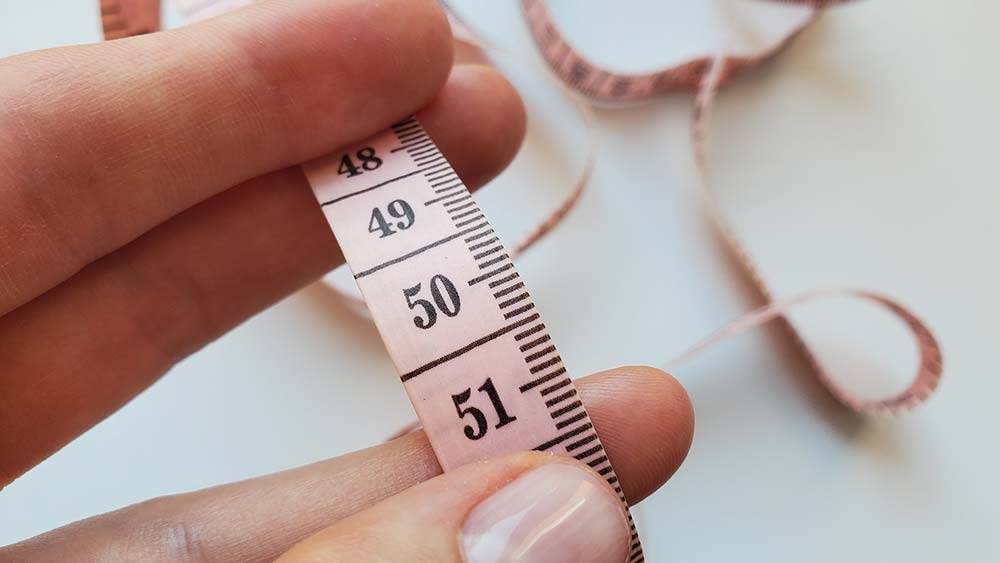
How much is too much, too little, or just right — and how best to measure it?
Let’s face it, most people detest body fat, especially their own. The reality, though, is we actually require it.
Either too much or too little stored fat can impair virtually all aspects of health and fitness. Additionally, excess body fat is a primary cause of most abnormal signs and symptoms. Moreover, our often distorted body image, including the discrepancy between actual and measured amounts, can lead to psychological stress and anxiety, disordered eating, overtraining, and mental and physical disease.
Fat is the most confusing aspect of the body for most people. The obsession about lowering fat drives conditions such as the spectrum of disordered eating. Additionally, the decades-old marketing myths that eating fat promotes more body fat storage has millions of consumers concluding that low-fat diets are a must — despite their very high failure rate.
Likewise, the concept of burning calories through exercise to reduce body fat creates confusion and abuse through overtraining. While exercise rates in the general population have increased in recent years, excess body fat has paradoxically risen too.
While most people underestimate their accurately determined body fat percentage, the ideal amount is a range of percentages that provide for optimal health and fitness.
The science of body fat percentage is based on an association between normal, healthy percentages, and abnormal — too much or too little body fat. The cutoffs for these ranges are summarized below.
The scientific terminology associated with body fat includes:
- Underfat (low): abnormally low body fat that does not meet healthy physical, metabolic and other needs.
- Healthy: appropriate body fat levels for optimal health and fitness.
- Overfat (high): levels associated with impaired physical, metabolic, cardiovascular and/or other unhealthy conditions.
Underfat is typically associated with disordered eating and excess exercise. At one time, the primary reason for being underfat was malnutrition. But for the first time in human history, the number of obese people worldwide exceeds those who are underweight.
The overfat pandemic keeps growing with around around 90 and 80 percent of adults in both developed and developing countries respectively falling into this category. Overfat can cause chronic inflammation and increased carbohydrate intolerance, leading to various secondary disease risks, such as abnormal cholesterol, triglycerides and blood sugar, and hypertension, which can trigger chronic conditions such as cancer, diabetes, and cardiovascular and Alzheimer’s diseases. Physical impairments are often caused by excess body fat too, including lower-back, spine and other pain conditions and injuries, and reduced work productivity due to absenteeism and disability. Overfat can also exist in athletes, and there’s a very high prevalence in the military. High numbers of children are also overfat, making them prone to developing poor motor skills, impaired physical, cognitive and social development, while often becoming overfat adults.
Measuring body fat
Obtaining accurate body fat percentages is not easy for most people. The process must be accessible, relatively inexpensive, safe, and come with the ability to repeat the same test regularly for ongoing monitoring. While DXA (dual energy X-ray absorptiometry) is one of the most accurate and precise methods of evaluating body fat percentage, it does not fit these criteria. Hydrostatic (water) weight and Bioelectrical Impedance Analysis are close in accuracy to DXA, but also don’t fit the above criteria. The rest of the body-fat measuring devices are not recommended due to reduced accuracy and reproducibility.
The waist-to-height ratio (WHtR) can scientifically evaluate body fat, and can be performed at home. The information from this test is the most convenient, inexpensive, safe and accurate, and a valuable clinical indicator of overfat risk for use by all people. Simply: The waist should be less than half the height. While this measure does not give a percentage of body fat, it does accurately determine whether you have excess body fat or not.
Herein lies the perceived dilemma. How can we know our percent body fat easily, accurately, inexpensively and safely? Most can’t. But just as important is knowing whether we have excess body fat or not, and be able to monitor progress of following a healthy lifestyle. To do that, use the WHtR.
To lose excess body fat, which infers carbohydrate intolerance, a good place to start is with the Two-Week Test.
References
Lohman TG, Houtkooper L. Going SB. Body fat measurement goes high-tech: not all are created equal. ACSMs Health Fit J. 1997; 1(1).
Maffetone PB, Laursen PB. The Prevalence of Overfat Adults and Children in the US. Front Public Health. 2017;5: 290. doi: 10.3389/fpubh.2017.00290.
Maffetone PB, et al. Overfat and underfat: new terms and definitions long overdue. Front Public Health. 2017;4:279.10.3389/fpubh.2016.00279.
McLester CN, et al. An Investigation of the Differences between Perceived vs. Measured Body Composition, Social Physique Anxiety, and Overall Appearance Satisfaction among College Students. Int J Exerc Sci. 2018; 11(5).
Shea J, et al. Body fat percentage is associated with cardiometabolic dysregulation in BMI-defined normal weight subjects. Nutr Metab Cardiovasc Dis. 2012; 22(9).10.1016/j.numecd.2010.11.009.









